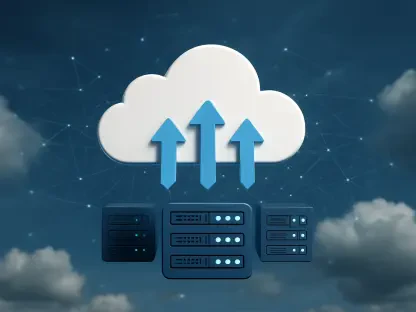For telecom operators under pressure to cut costs, lift service quality, and tame rising energy bills, the arrival of agentic AI promised not just smarter tools but operational systems that could reason, plan, and act across the enterprise without waiting for prompts or manual handoffs. The shift mattered because closed-loop agents could align business intent with day-to-day execution, surfacing insights from network telemetry and enterprise data and then acting on them with auditable guardrails. By pairing these agents with cloud-native platforms, domain-specific models, and unified security, Communications Service Providers found a path to measurable outcomes: faster resolution in care, fewer incidents in security, self-tuning networks, and energy-aware operations that reconciled service-level goals with sustainability mandates.
From Generative to Agentic: What Changes
Generative AI wrote text and summarized documents; agentic AI closed the loop between perception, decision, and action. In practice, that meant systems that did not stop at drafting a response or suggesting the next step but handled multi-stage workflows from intake to resolution, learned from feedback, and improved with every cycle. In telecom, the difference showed up in fewer escalations and less context loss, because agents navigated policies, knowledge bases, and live telemetry while maintaining state. The payoff grew as agents specialized: a care agent that could reason over order history and network status, a security agent that triaged alerts and kicked off containment, or a network operations agent that validated changes against compliance rules before rolling them out.
Moreover, agentic design forced integration discipline. To act safely, agents required authenticated access, role-aware permissions, and high-fidelity data contracts across OSS/BSS, knowledge repositories, and observability stacks. Microsoft’s approach linked core models with Azure services, fine-tuned domain copilots, and a Zero Trust foundation so actions were logged, reversible, and governed. Unlike prompt-led pilots that stalled at the edge of production, this stack supported closed-loop execution in care, security, and network operations, including rollback procedures and policy checks. The result was not a replacement for expertise but a scalable way to apply it, with agents handling routine tasks while specialists focused on exceptions and strategy.
Market Momentum and ROI Signals
Adoption signals pointed to a clear inflection. Appledore Research projected a 100x rise in agentic usage in telecom within five years, as early pilots moved to production-scale systems. The economics underlined the shift: Appledore estimated that committing roughly 0.4% of Opex to agentic initiatives could unlock up to $60 billion in sector-wide operational savings, a figure that resonated with CFOs tasked with funding transformation from run budgets. Current spending patterns reinforced the near-term case, with an estimated 60% of AI budgets concentrated in service management and customer care where payback windows were short, performance was measurable, and integration complexity was manageable.
Energy urgency added momentum. With S&P Global forecasting a 50% rise in global power demand by 2050 and wireless infrastructure accounting for roughly 45% of telecom electricity use, the industry needed automation that treated energy as a first-class variable. Agentic systems could model demand patterns, align them with quality-of-service targets, and fine-tune power states in radio, transport, and core without jeopardizing experience. On Microsoft’s cloud and AI platforms, predictive analytics and policy-driven orchestration made it feasible to plan capacity and energy jointly, document decisions for regulators, and demonstrate continuous improvement. The ROI math expanded beyond labor savings to avoided outages, reduced truck rolls, and lower kWh per bit.
Customer Experience and Service Management Wins
Customer-facing results helped convert skepticism into budget. AT&T’s “Ask AT&T,” developed with Microsoft and incorporating generative and agentic components, cut unanswered website queries by half and made care agents 33% faster at retrieving answers, improving resolution time and reducing call backs. The system’s reach extended beyond front-line Q&A, enabling enterprise-wide search over asset inventories and supplier data and supporting custom domain models for network management tasks. This combination brought accuracy, speed, and context together, allowing the organization to resolve issues earlier in the journey and reserve human attention for edge cases and high-value conversations.
Sales operations saw similar dividends. Lumen Technologies deployed Microsoft 365 Copilot for Sales across a 3,000-person team, reporting about $50 million in productivity gains over a year and reclaiming roughly four hours per seller weekly. Those hours mattered because they shifted time from administrative toil—CRM hygiene, onboarding flow, document analysis—into consultative engagement, pipeline progression, and account growth. Across both examples, the pattern held: agentic AI reduced handoffs and made interactions more personal by grounding responses in enterprise context, while automating mid-office orchestration that typically introduced latency. The cumulative effect was a leaner cost to serve and faster cycle times.
Security, Automation, and Resilience
Security pressure escalated as adversaries adopted AI, pushing defenders to match speed with judgment. Microsoft Security Copilot, designed around a Zero Trust architecture, applied autonomous agents to high-volume, high-variance tasks such as file and URL analysis, phishing assessment, and incident triage. Crucially, it learned from analyst feedback, improved prioritization, and triggered workflows that combined containment, data loss prevention, and evidence collection with minimal manual orchestration. For telecom environments flooded with alerts, the outcome was fewer missed signals, clearer incident narratives, and response that matched the tempo of attacks.
Partnerships made the model tangible. Nokia’s integration of its NetGuard Cybersecurity Dome with Azure OpenAI Service brought telecom-grade detection and response together with agentic capabilities, strengthening accuracy and shortening dwell time. The architecture demonstrated how domain telemetry, AI reasoning, and cloud-scale processing could cohere into a resilient operating posture. Governance remained central: playbooks enforced policy, actions were traceable, and models were constrained by role-based access. As threat actors blended automation with social engineering, agentic defense provided the adaptable backbone, conserving scarce expert capacity for novel threats while routine work flowed through trusted, explainable automations.
Autonomous Networks and Energy-Aware Operations
Network operations represented the next efficiency frontier, where agentic AI analyzed usage and traffic patterns continuously, predicted congestion and failure risk, and rebalanced loads across core and edge in real time. By validating changes against service-level commitments and documenting every adjustment, agents supported compliance while lifting reliability. Predictive maintenance reduced truck rolls and pulled-forward interventions before tickets spiked. Combined with Microsoft’s data and AI services, operators gained capacity forecasting that aligned with marketing campaigns, device rollouts, and seasonal demand, translating strategy into precise resource allocation.
Energy optimization intertwined with performance rather than competing with it. With nearly half of telecom power use concentrated in wireless infrastructure, agentic systems adjusted power states, carrier activation, and scheduling in response to expected demand, all while preserving quality thresholds. The playbook extended to planning: agents identified energy inefficiencies, flagged upgrade candidates, and modeled spectrum strategies that met service goals with fewer kilowatt-hours. Documented decisions simplified reporting to regulators and reinforced sustainability commitments. The outcome was a tighter operating loop where energy, experience, and cost moved together, not in tradeoff, setting the stage for consistent gains quarter over quarter.
Blueprint To Scale: Steps That Mattered
Execution depended on a cohesive platform, and Microsoft’s blueprint offered one. Core models and agent frameworks, Azure integration, Security Copilot, and Copilot experiences in productivity and business apps formed a stack that compressed time to value. Partnerships with vendors and operators—such as Nokia’s security integration and deployments at AT&T and Lumen—showed how domain expertise and cloud AI converged. Shared governance, telemetry feedback, and role-aware controls kept agents reliable and auditable. CSPs that started with outcome-focused use cases in care, security, or sales, then expanded to autonomous network and energy optimization, moved faster and measured impact credibly.
The practical next steps had been clear. Operators established clean data pathways from OSS/BSS and observability tools, defined policy-anchored playbooks, and ring-fenced pilot domains with success metrics tied to cost, reliability, and energy. They invested a modest slice of Opex to seed agentic programs, used domain-tuned models to lift accuracy, and built feedback loops so agents learned from every action. As results accumulated, leaders broadened the scope to decision support across the C-suite and packaged automation as B2B services, turning AI capability into revenue. In the end, agentic AI turned out to be a structural lever, not a bolt-on, and the organizations that treated it that way captured the gains first.









